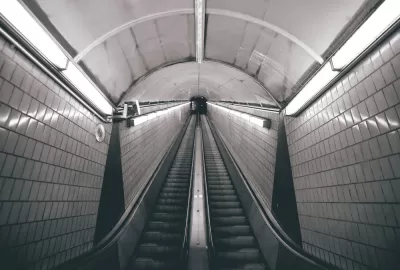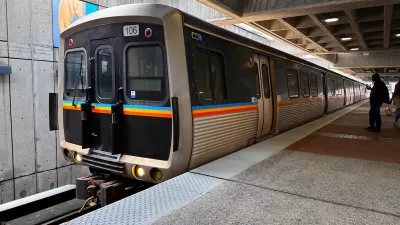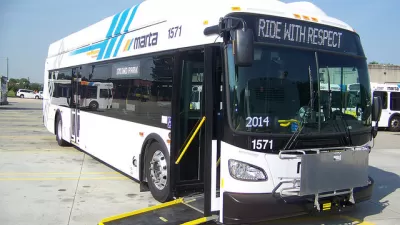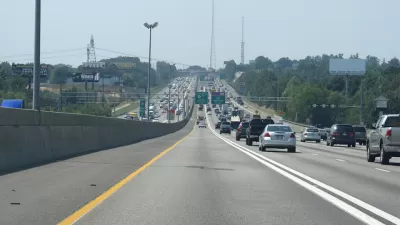The I-85 bridge collapse forced many people living and working in and around Atlanta to make new transportation choices. Now, just months later, the region is back to business as usual.

Michael Kahn reports on the disappointing results of the Atlanta region's experiment with public transit in the wake of the closure of I-85 following a fire and the collapse of a bridge along the highway in April.
Many saw the I-85 temporary demise "as a chance to hook the masses on MARTA," writes Kahn, "and an initial jump of ridership by 25-percent looked promising." As detailed in a post by Joe Cortright, the region adapted well to the reduced transportation capacity, and traffic found a way to balance out.
But those gains in alternative transportation were short-lived, as evidenced by the story of a July 4 snafu that delayed trains and left holiday travelers fuming. Buried in that article by Doug Richards is the news that ridership on MARTA has returned to pre-collapse levels.
Both writers note that frequent service interruptions aren't likely to inspire hordes of new riders to adopt public transit, although the short duration of the I-85 closure also probably didn't force that many riders to make public transit a routine.
FULL STORY: MARTA saw no lasting increase in ridership from the I-85 bridge collapse

Alabama: Trump Terminates Settlements for Black Communities Harmed By Raw Sewage
Trump deemed the landmark civil rights agreement “illegal DEI and environmental justice policy.”

Planetizen Federal Action Tracker
A weekly monitor of how Trump’s orders and actions are impacting planners and planning in America.

The 120 Year Old Tiny Home Villages That Sheltered San Francisco’s Earthquake Refugees
More than a century ago, San Francisco mobilized to house thousands of residents displaced by the 1906 earthquake. Could their strategy offer a model for the present?

In Both Crashes and Crime, Public Transportation is Far Safer than Driving
Contrary to popular assumptions, public transportation has far lower crash and crime rates than automobile travel. For safer communities, improve and encourage transit travel.

Report: Zoning Reforms Should Complement Nashville’s Ambitious Transit Plan
Without reform, restrictive zoning codes will limit the impact of the city’s planned transit expansion and could exclude some of the residents who depend on transit the most.

Judge Orders Release of Frozen IRA, IIJA Funding
The decision is a victory for environmental groups who charged that freezing funds for critical infrastructure and disaster response programs caused “real and irreparable harm” to communities.
Urban Design for Planners 1: Software Tools
This six-course series explores essential urban design concepts using open source software and equips planners with the tools they need to participate fully in the urban design process.
Planning for Universal Design
Learn the tools for implementing Universal Design in planning regulations.
Clanton & Associates, Inc.
Jessamine County Fiscal Court
Institute for Housing and Urban Development Studies (IHS)
City of Grandview
Harvard GSD Executive Education
Toledo-Lucas County Plan Commissions
Salt Lake City
NYU Wagner Graduate School of Public Service





























